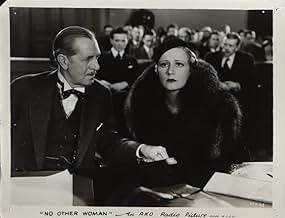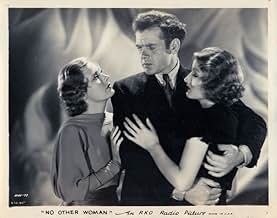Agrega una trama en tu idiomaA steelworker and his aspiring wife make millions when they become partners in a dyeworks. Unfortunately, success does not bring happiness.A steelworker and his aspiring wife make millions when they become partners in a dyeworks. Unfortunately, success does not bring happiness.A steelworker and his aspiring wife make millions when they become partners in a dyeworks. Unfortunately, success does not bring happiness.
- Dirección
- Guionistas
- Elenco
- Premios
- 1 premio ganado en total
Theodore von Eltz
- Sutherland
- (as Theodore Von Eltz)
Jules Cowles
- Boarder
- (sin créditos)
Phyllis Fraser
- Minor Role
- (sin créditos)
Arthur Hoyt
- Bridge Player
- (sin créditos)
Mary Mason
- Minor Role
- (sin créditos)
Opinión destacada
I saw(?) this flick once before on the tube, but the reception on the station was so bad, I had to wait for it to come on again. It was a good wait, but it came around again. Irene Dunne and Charles Bickford were probably the only ones around who could'a pulled this one off. Bickford works at the mill, marries Dunne, works hard for the money, but somehow is just not satisfied with life. He's a lucky stiff though, as Irene Dunne-- as was wont of wives in those days--stuck with him through the thick and the thin of it. What is more incredulous is the rags to riches to rags aspect of this film. Bickford finances a new type of dye developed by the young upstart living in the family boarding house, and becomes a millionaire in the process. Yeah...right !! Still more incredulous--if not audacious--is the court scene where a very nasty divorce takes place, replete with witnesses who have been 'greased' to render perjured testimony...the whole nine yards. Bickford flies too close to the Sun with wings made of wax and...you can fairly well imagine the rest. It could'a worked, if the story had been a bit more developed, and if the film had been somewhat longer. This was essentially a character study which failed to study its characters with any depth.
- tmpj
- 16 jun 2002
- Enlace permanente
Argumento
¿Sabías que…?
- TriviaAt the wedding reception, guest are seen pinning money on Anna's dress before dancing with her. This was a common practice in Polish immigrant communities and was called the "money dance." Sometimes the bride wears an apron or carries a purse in which to place the money. The purpose of the money is for the couple's honeymoon, to set up housekeeping, or for the couple's first-born child.
- ErroresThe shadow of the camera can be seen falling on people at the wedding as it moves around the room.
- Citas
Anna Stanley: To your dying day, you'll work in the mill.
Jim Stanley: Sure! Why not?
Anna Stanley: Like your father did, and mine. And your children will go on doing the same thing, and their children...
Jim Stanley: Hey - what is all this tripe?
- ConexionesRemake of Just a Woman (1925)
Selecciones populares
Inicia sesión para calificar y agrega a la lista de videos para obtener recomendaciones personalizadas
Detalles
- Fecha de lanzamiento
- País de origen
- Idioma
- También se conoce como
- Just a Woman
- Locaciones de filmación
- Birmingham, Alabama, Estados Unidos(TCI Ensley Works - steel mill exteriors after wedding reception)
- Productora
- Ver más créditos de la compañía en IMDbPro
- Tiempo de ejecución58 minutos
- Color
- Relación de aspecto
- 1.37 : 1
Contribuir a esta página
Sugiere una edición o agrega el contenido que falta

Principales brechas de datos
By what name was No Other Woman (1933) officially released in India in English?
Responda




































